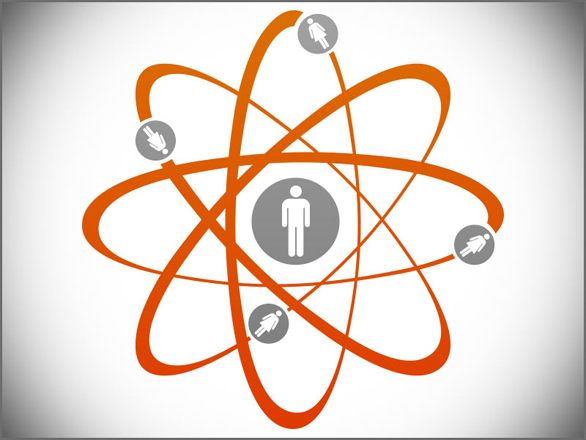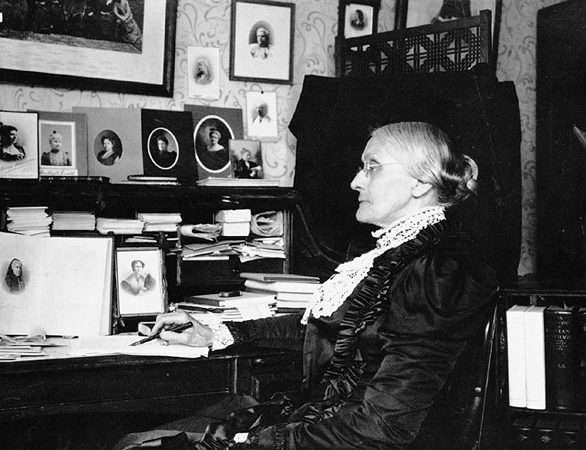
Particle physicist Sarah M. Demers shares her experience of being a woman in science, and why it’s a problem that she doesn’t see gender equity around her yet. Image: Thinkstock.com
I just might have the best job in the world. As a particle physicist and professor at Yale, I am a happy cog on the wheel of humanity, trying to understand the universe. I collaborate with brilliant people, young and old, from all over the globe. But while I love my job, the truth is I am part of a system that is rigged.
We have come a long way since the day in 1900 that suffragist Susan B. Anthony pledged her life insurance policy to the University of Rochester on a fundraising deadline. This desperate move clinched a deal with trustees that allowed women to enroll. I was admitted there as a graduate student in physics almost a century later.
I remember reading the orientation materials with excitement. I looked over the roster of my classmates and my enthusiasm dimmed a bit as I counted only six women out of thirty. (And when I finally met one of the six, Marion, “she” turned out to be a man from Romania.) How, in 1999, could I be joining a club that was so small?
First, for the good news. The club may be small, but at least it exists. Pioneers like Anthony, Marie Curie and Bernice Sandler (the “Godmother of Title IX”) have opened institutional doors, modeled scientific brilliance and changed the climate. Women can now build up their credentials and compete for the same careers in science as men. Reports from my younger colleagues of being steered away from the labs because some misogynist says, “Women shouldn’t do science” are still coming in, but less often.
Even claims about men having more innate scientific ability are becoming rarer. It just doesn’t fit the evidence. Girls outperform boys in science exams sometimes, and sometimes it’s vice versa, depending on the country in question. From Columbia, where boys scored 4% higher on average, to Jordan, where girls scored 9% higher on average, the data do not jibe with a gender explanation, as this New York Times infographic shows. (Intrigued? This country-by-country data comes from Andreas Schleicher’s PISA test; watch his TED Talk to learn more.)
And yet, despite this progress, this data, women still only account for about one in ten physics professors in the U.S. As much as scientists talk about eradicating bias from our experiments, we sure haven’t done a great job eradicating it from our profession.
A framework to produce good scientists on an equal playing field requires objectivity. Students take tests, receive grades and apply for the next phase of school. Researchers submit papers and grant proposals that are returned with the feedback of peer review. We apply for jobs, and if we get them, funding. Only the highest rated work is funded and published.

Susan B. Anthony made an unusual deal to get women admitted to the University of Rochester. About 100 years later, gender bias in university science departments continues.
In this environment, even a small bias will have a huge ripple effect on the quality of scientific results that emerge and the make-up of the researchers left employed and standing at the end of the day. Unfortunately, we have a growing body of evidence that subconscious bias is alive and well. A few of my colleagues at Yale conducted a study published in the Proceedings of the National Academy of Science that shows gender bias among science faculty members. They sent an application for a lab manager position to hundreds of science professors at six leading research institutions. Half of the applications were labeled as coming from John. The other half, in all other ways identical, came from Jennifer. The professors were asked to rate the application they received and suggest a starting salary.
The results? Jennifer was rated as less competent than John, though she was viewed as more likable. Jennifer was less likely to be recommended for hire and less likely to be considered worth mentoring. Her average suggested starting salary was lower ($26,508 compared to $30,238). The bias against Jennifer showed in both male and female faculty members, both younger and older professors, across the fields of physics, biology and chemistry.
I have been around the block and back on the topic of women in science. I would much rather be writing about the Higgs boson, the physics of music, or what we know about effective science education. But subconscious bias against women in science is real, it is damaging and while the studies we see suggest that it is almost universally practiced, it is far from universally acknowledged.
In a recent Time Magazine article about a prominent woman in physics, the reporter wrote, “Physics is a male-dominated field, and the assumption is that a woman has to overcome hurdles and face down biases that men don’t. But that just isn’t so. Women in physics are familiar with this misconception and acknowledge it mostly with jokes.”
It is difficult to solve a problem that we won’t admit we have, but good science demands that we stamp out subconscious bias. Luckily, raising awareness and continuing the conversation is much less of a sacrifice than signing over a life insurance policy. A century from now I hope that identical work from Jennifer and John will receive, on average, identical marks. I hope that our great-grandchildren will not be scratching their heads asking, “Why so little progress?” And I hope that an article by a physicist will be about her latest discovery, not gender.
Sarah Demers is an assistant professor of physics at Yale University. She wrote this piece through The OpEd Project’s Public Voices Fellowship Program.
Want to learn about more women in science and tech? Watch today’s talk from mechanical engineer Katherine Kuchenbecker, who is exploring the “technology of touch.” And check out our list of 70+ TED Talks from female physicists, biologists, engineers, doctors, technologists, oceanographers, roboticists, and astronauts »
Comments (17)
Pingback: Gênero e (des)igualdade na ciência | True Singularity
Pingback: Why I Won’t Stop Talking | Scientific Femanomaly
Pingback: Gender Biases in Science | Biology Frontiers
Pingback: Leaning in… | foxonthego
Pingback: Daily Feminist Cheat Sheet